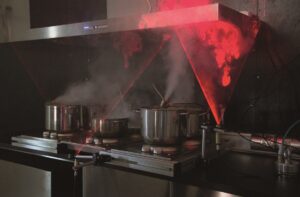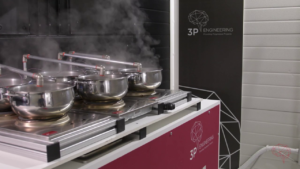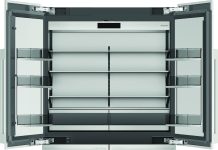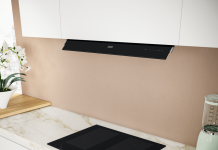Better performance of hoods and hobs, lower fan noise and sanitized kitchen environment.
How not wasting energy and, at the same time, saving in the bill? Dealing with the increase of the price of raw materials and the rise in energy costs, more and more consumers pay attention to the issues of sustainability and energy efficiency, both in relation to environmental themes and to avoid repercussions in the bill. Through Capture Efficiency tests, today manufacturers can offer end-users hoods and hobs able to balance the energy consumption with the real suction capacity of fumes and steams, matching a lower noise of the fan and a better air sanitization in the kitchen environment.

Knowing the suction capacity in numbers
Until now, it was possible to know the suction capacity of a hood or of a hob, but without indicating the percentage of pollutants actually sucked: 3P Engineering, Italian engineering company, has developed a unique method on the uptake efficiency that for the first time allows manufacturers to rely on numerical, quantifiable and comparable numbers, to measure products’ capacity not only of sucking but of preventing the diffusion of odours, steams and pollutants. Due to these tests stemming from years of researches and specific know-how, producers can assess and improve the performances of hoods and hobs, since the product development phase: with equal yield, it is possible to choose the most suitable fan to be combined to the system, so avoiding oversizing, related costs and energy wastes, with benefits also in terms of lower noise, another indisputable advantage for consumers.

Efficient sanitization
Moreover, measuring the effective suction capacity of a hood allows end users to sanitize the air of the domestic environment more efficaciously, reducing pollutants, especially in the kitchen, where the noxious power of fumes and steams that propagate in the food preparation can concentrate, with particles of NO2 (nitrogen dioxide), CO (carbon monoxide) and H2CO (formaldehyde), damaging the IAQ (Indoor Air Quality). While cooking, in fact, it is often necessary to proceed to the air change by opening the window (with energy dispersion in case of air conditioned or heating), even using suction hoods, downdraft hobs and induction hobs with integrated hoods. This because we do not know the real percentage of fumes, odours and steams actually absorbed in relation to the overall quantity of collected air. For this reason, the uptake efficiency represents a strategic test for hood and hob manufacturers: carrying out this kind of tests on one’s own systems, it is possible to offer products able to balance the energy consumption and the real suction capacity of fumes and steams. 3P Engineering is equipped with independent accredited Test Laboratory (Accredia Lab n. 1537 L, UNI CEI EN ISO/IEC 17025), where they carry out a complete range of tests according to IEC/EN 61591 and conformity tests in compliance with RoHS 2011/65/UE directive, with guarantee of test objectivity.



